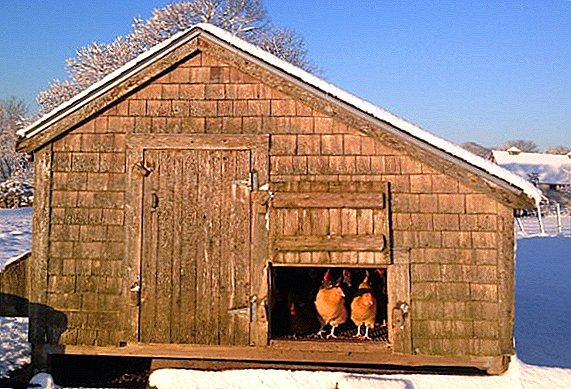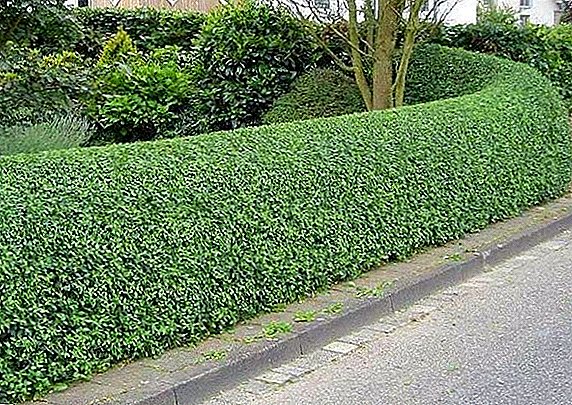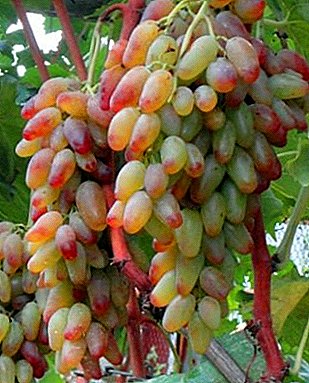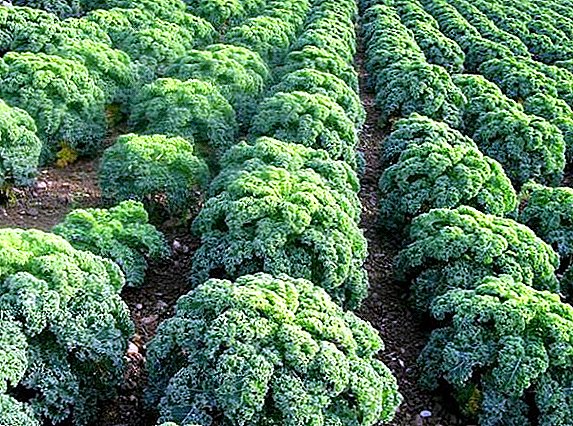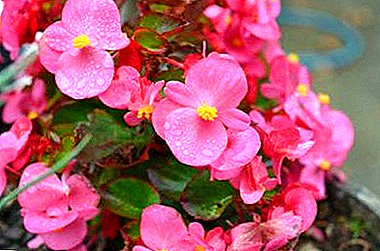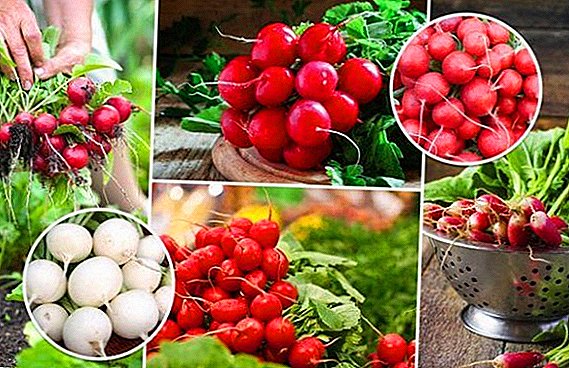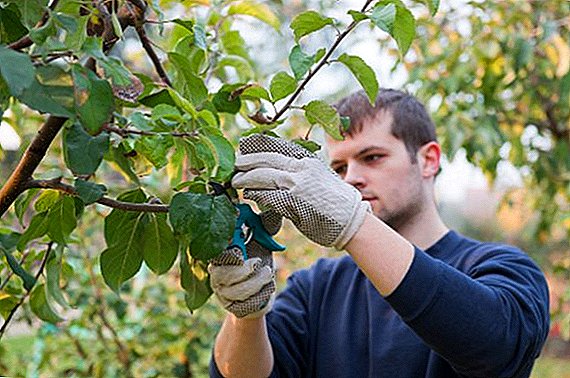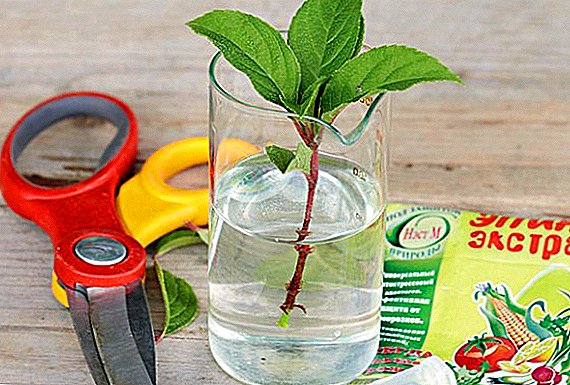 Without annual rejuvenation, currant bushes will not be able to use their full potential for abundant fruiting. And all because the berries are tied to last year's growth branches, which are not more than 5 years. That is why it is so important to remove all the old, dry, damaged, competing with each other and interfering with the growth of new shoots elements. When to trim a plant, how to do it correctly, and whether there are differences in cutting the bushes of red and black currants - we will tell about all this later in the article.
Without annual rejuvenation, currant bushes will not be able to use their full potential for abundant fruiting. And all because the berries are tied to last year's growth branches, which are not more than 5 years. That is why it is so important to remove all the old, dry, damaged, competing with each other and interfering with the growth of new shoots elements. When to trim a plant, how to do it correctly, and whether there are differences in cutting the bushes of red and black currants - we will tell about all this later in the article.
The use of pruning currant bushes
Regular cutting of currant bushes contributes to their abundant yield. Therefore, if you want plants to develop with full dedication, do not run them.  Experts explain that with regular removal of the sick, frozen, too old, dried, fungal or harmful insect branches, the continuous process of formation of root shoots starts and, accordingly, the bush forks.
Experts explain that with regular removal of the sick, frozen, too old, dried, fungal or harmful insect branches, the continuous process of formation of root shoots starts and, accordingly, the bush forks.
Only young shoots are prone to abundant fruiting, although occasionally berries may appear on old ones.
Important! With regular rejuvenation of black currant bushes for 25 years, abundant fruiting is guaranteed, and for red one this period is possible only until the age of 15 years.Shorn bushes, in contrast to thickened ones, receive more light, are less affected by pathogenic pathogens and much easier to maintain. Experienced gardeners are advised to begin pruning on young seedlings.
 The first 4 years they provide an opportunity to develop culture and increase the growth of the 15 main branches. Ideally, 4 annual and two-year-old sprouts appear on such a plant. It is in this form that the bush must be kept for the next 15-20 years.
The first 4 years they provide an opportunity to develop culture and increase the growth of the 15 main branches. Ideally, 4 annual and two-year-old sprouts appear on such a plant. It is in this form that the bush must be kept for the next 15-20 years.You will be interested to learn more about black, red, white and golden currants.
When to prune currants
The removal of all unnecessary branches in the berry is recommended to be carried out in the initial stages of the growing season. In early spring, before the buds begin to open, you need to carefully examine the bushes and cut off all unnecessary.
At the same time, it is important not to miss the deadlines, because blackcurrant begins to bloom early, and this process lasts a short time.  You can not cut a blooming bush, it is fraught with its exhaustion and the vain loss of nutrient resources. If you do not have time to complete the trimming, do not forget to continue the work begun in the fall.
You can not cut a blooming bush, it is fraught with its exhaustion and the vain loss of nutrient resources. If you do not have time to complete the trimming, do not forget to continue the work begun in the fall.
Did you know? Latin name "ribes" currants gave the Arabs in 711 year. Then they conquered Spain and in search of their favorite rhubarb (ribas) were forced to adapt to the plants here. It was the sour currant berries that reminded them of the missing rhubarb.Some gardeners try to carry out the main pruning of currants in the late autumn, when the plant leaves foliage. The main thing is to catch before the frost. And in early March, dry and frozen sprouts are harvested. In the 2nd decade of July, the tops are cut off on skeletal shoots. This is done to branch the bush and bookmark the buds of the next year, of which in the future there will be berries.
Set of garden tools for work
For cutting currant bushes, it is important to acquire the necessary equipment. For professionals, an elementary garden set consists of a pruner (conventional or bypass), a brush cutter, a delimber, a hacksaw, and a pair of scissors.
All tools must be sharp. Also, when choosing them, pay attention to the ends.
It is desirable that they were narrow and allowed to effortlessly make their way to the bases of the sprouts without injuring the neighboring ones. It is also worth considering the weight and safety of the inventory, the convenience of its handle.  Experts strongly recommend starting pruning with disinfectant measures on the blades of the instruments involved. They are implemented using a weak solution of potassium permanganate or alcohol. The same procedure ends haircut in the berry.
Experts strongly recommend starting pruning with disinfectant measures on the blades of the instruments involved. They are implemented using a weak solution of potassium permanganate or alcohol. The same procedure ends haircut in the berry.
Important! For delicate pruning currant bushes you need to choose tools with a thin bearing part and sharply sharpened blades.
Pruning currant bushes depending on age
Before undertaking a pruner, every gardener must understand that his main task is to develop a bush from 15 basic branches that are not more than 5 years old.  All that is older, ruthlessly removed. Such sprouts only waste the nutritive resources from the root system.
All that is older, ruthlessly removed. Such sprouts only waste the nutritive resources from the root system.
Let us consider in more detail the main nuances of currant pruning in the spring at all stages of its development with visual schemes and photos.
Learn also how to prune grapes, strawberries, apples, cherries, plums, pears, peaches.
Pruning seedlings when planting
The first shearing of the bushes is made immediately after planting and consists in the removal of all shoots. The cut accounts for just over 3 buds. 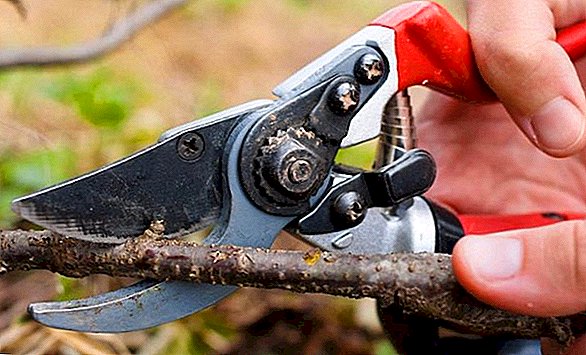 And do not worry that the plant can be unwell after such a radical haircut. On the contrary, it will contribute to the correct formation of the crown. And by the next spring 5-6 young twigs will grow.
And do not worry that the plant can be unwell after such a radical haircut. On the contrary, it will contribute to the correct formation of the crown. And by the next spring 5-6 young twigs will grow.
Pruning bushes second year
On biennial plants, zero shoots and some skeletal ones are subject to removal. This is a very important moment, because the further fruiting of the bush depends on it.
In order not to be mistaken, always leave at least 3, but not more than 5 central branches that do not compete with each other and form the skeleton of a plant.  Choose healthy and powerful sprouts, as frail and lifeless will bring little use. They only hinder the full development of the bush.
Choose healthy and powerful sprouts, as frail and lifeless will bring little use. They only hinder the full development of the bush.
Did you know? Scientists have shown that slightly greenish currant fruit is much more useful than overripe. And the reason is constituent vitamin C, which in unripe berries - 4 times more.In July, it is necessary to cut the top of the currant bush in the vododogodich to give the opportunity to increase not the height, but the lateral growths. In this case, the cut falls under the second kidney from above. All manipulations are aimed at the formation of new fertile shoots.
Formative pruning bushes 3-4 years
In the 3rd and 4th year of life, currant bushes are pruned in the same way as biennial specimens. The main principle of the gardener is to eliminate all unnecessary sprouts that thicken the crown and compete with each other.
It is important to leave up to 6 central shoots. Do not allow the development of branches growing from the inside. They must be removed as they shade the fertile growth, interfering with their growing season.
The second rule of haircut says about shortening the upper zones of skeletal and last year's branches.  Ensure that each branch has no more than 2 buds. If you do it right, by the 5th year of life the plant will form the correct spherical crown.
Ensure that each branch has no more than 2 buds. If you do it right, by the 5th year of life the plant will form the correct spherical crown.
Did you know? 1 tablespoon of black currant berries with sugar contains the daily intake of vitamin C, potassium and iron.
Pruning currants 5 and more years
Starting at 5 years of age, the plant forms aging, woody branches. Therefore, he needs a rejuvenating haircut, which is to remove dry, frozen, broken and non-viable, drooping and old branches.
Consider that all the old is eliminated along with the new shoots, called spinners. Do not regret cutting off the creeping shoots.
They, like the sick areas, interfere with good ventilation, lighting and circulation of juice. Harvest from them is also not worth it.  The trimming scheme on the 5th and subsequent years of currants is the same as in 4-year-old bushes. Here are just branches, which are from 2 to 4 years old, need to be shortened to the 4th kidney, and last year’s - to the 2nd kidney. It is also important to remove new shoots, leaving only the skeletal.
The trimming scheme on the 5th and subsequent years of currants is the same as in 4-year-old bushes. Here are just branches, which are from 2 to 4 years old, need to be shortened to the 4th kidney, and last year’s - to the 2nd kidney. It is also important to remove new shoots, leaving only the skeletal.
Features trimming running bushes
If you have a currant berry, but you have never done anything like it before, in order to improve the fruiting of the bushes, it is recommended to start forming pruning with thinning the crown.  First of all, on old bushes, remove broken, wilted and poorly developed branches. Also, all cropless and inward-facing sprouts are subject to removal.
First of all, on old bushes, remove broken, wilted and poorly developed branches. Also, all cropless and inward-facing sprouts are subject to removal.
Then inspect the plant, select from among all its annual shoots 3 of the most powerful, and cut off the rest.
Important! The drying ends of the branches of the old currant bushes must be cut off before the first powerful branch.
Further haircut on running plants depends on their yield. In cases when the bush sits for a long time without increments or only slightly increases them, it will be necessary to eliminate several old skeletal branches, as well as shortening the apical zones of the remaining shoots.
It will be useful for you to learn how to protect currants from pests and diseases.Now you know the main principles of currant bushes formative pruning. We hope our tips will be useful to you in creating a productive berry.


